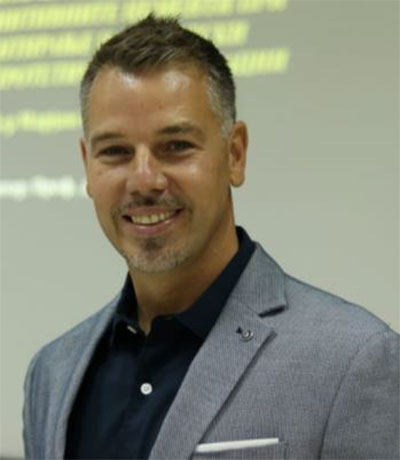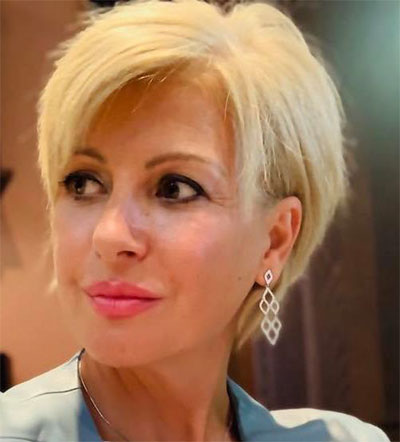


 Assoc. prof. dr Mijoska Aneta |
 Assist. Prof. dr Petkov Marjan |
MANAGEMENT OF PAIN IN PATIENTS WITH TEMPOROMANDIBULAR DISORDER (TMD): CHALLENGES AND SOLUTIONS
Temporomandibular disorders (TMD) comprise a variety of conditions affecting the anatomy and functional characteristics of the temporomandibular joint, masticatory muscles and surrounding structures. Common factors contributing to TMD are related to occlusion, trauma, anxiety and behavioral causes that frequently provoke symptoms of muscular, articular, and periarticular pain. Orofacial pain is defined as pain manifested in the face or oral cavity, including disorders as TMD that are major cause of non-odontogenic chronic pain. TMD has considerable prevalence, with a significant impact on physical and psychosocial wellbeing. Its prevalence has been reported to be between 3.7% and 12% and is three to five times more frequent in women. The so-called parafunctional behavior and conditions such as bruxism are some of the most important causes of TMD. By far, muscular dysfunction or hyperactivity is the most frequent cause of TMD. Treating the dysfunction can be particularly challenging, and a suitable therapeutic approach should be aimed at alleviating the main signs and symptoms of this condition. The vast majority of TMD symptoms subside spontaneously, and a large proportion of patients respond to conservative therapy.
When injected into a muscle Botulinum toxin-type A (BoNT) blocks the release of acetylcholine - neurotransmitter that induces muscle contraction, blocks exocytosis and reduces the ability of the muscle to contract. Despite the limited research on chronic orofacial pain, the preliminary reports of efficacy are promising and offer the potential to improve pain relief in patient’s refractory to conventional treatments. However, BoNT should only be used when those therapies have failed. The global approach to TMD and bruxism should be multidisciplinary.
Assis. Prof. Dr. Marjan Petkov was born in Skopje, March 15, 1977. Works at Department for Prosthodontics at The University Dental Clinical Center „St. Pantelejmon” and Faculty for Dentistry „Cyril and Methodius University”, Skopje, North Macedonia. With 21years of experience, he is actively engaged in scientific research work. He appears as the author and co-author of 75 publications published in domestic and international journals, 4 books… He participated in numerous seminars, symposiums, congresses, workshops and courses in the country and abroad, taking active or passive participation. Completed his specialization in dental prosthodontics in February 2008. He received the Master's degree in dental sciences in the field of dental prosthetics in September 2010.
He has attended a 5-week professional stay in 2014, at the University of Copenhagen, Faculty of Dentistry, and Department of Oral Rehabilitation. He had improved the skills in CAD/CAM systems and implant prosthetic superstructures, as well as training in the use of 3 Shape Trios - Shade Measurements and Intraoral 3D scanning. The doctoral dissertation "Evaluation of the influence of temporary cements on the adhesion of definitive cements during cementation of aesthetic fixed prosthetic restorations" was defended on 07.09.2018.
 Assoc. prof. dr Mijoska Aneta |
 Assist. Prof. dr Petkov Marjan |
MANAGEMENT OF PAIN IN PATIENTS WITH TEMPOROMANDIBULAR DISORDER (TMD): CHALLENGES AND SOLUTIONS
Temporomandibular disorders (TMD) comprise a variety of conditions affecting the anatomy and functional characteristics of the temporomandibular joint, masticatory muscles and surrounding structures. Common factors contributing to TMD are related to occlusion, trauma, anxiety and behavioral causes that frequently provoke symptoms of muscular, articular, and periarticular pain. Orofacial pain is defined as pain manifested in the face or oral cavity, including disorders as TMD that are major cause of non-odontogenic chronic pain. TMD has considerable prevalence, with a significant impact on physical and psychosocial wellbeing. Its prevalence has been reported to be between 3.7% and 12% and is three to five times more frequent in women. The so-called parafunctional behavior and conditions such as bruxism are some of the most important causes of TMD. By far, muscular dysfunction or hyperactivity is the most frequent cause of TMD. Treating the dysfunction can be particularly challenging, and a suitable therapeutic approach should be aimed at alleviating the main signs and symptoms of this condition. The vast majority of TMD symptoms subside spontaneously, and a large proportion of patients respond to conservative therapy.
When injected into a muscle Botulinum toxin-type A (BoNT) blocks the release of acetylcholine - neurotransmitter that induces muscle contraction, blocks exocytosis and reduces the ability of the muscle to contract. Despite the limited research on chronic orofacial pain, the preliminary reports of efficacy are promising and offer the potential to improve pain relief in patient’s refractory to conventional treatments. However, BoNT should only be used when those therapies have failed. The global approach to TMD and bruxism should be multidisciplinary.
Assis. Prof. Dr. Marjan Petkov was born in Skopje, March 15, 1977. Works at Department for Prosthodontics at The University Dental Clinical Center „St. Pantelejmon” and Faculty for Dentistry „Cyril and Methodius University”, Skopje, North Macedonia. With 21years of experience, he is actively engaged in scientific research work. He appears as the author and co-author of 75 publications published in domestic and international journals, 4 books… He participated in numerous seminars, symposiums, congresses, workshops and courses in the country and abroad, taking active or passive participation. Completed his specialization in dental prosthodontics in February 2008. He received the Master's degree in dental sciences in the field of dental prosthetics in September 2010.
He has attended a 5-week professional stay in 2014, at the University of Copenhagen, Faculty of Dentistry, and Department of Oral Rehabilitation. He had improved the skills in CAD/CAM systems and implant prosthetic superstructures, as well as training in the use of 3 Shape Trios - Shade Measurements and Intraoral 3D scanning. The doctoral dissertation "Evaluation of the influence of temporary cements on the adhesion of definitive cements during cementation of aesthetic fixed prosthetic restorations" was defended on 07.09.2018.
This site uses cookies. Find out more about cookies and how you can refuse them.
